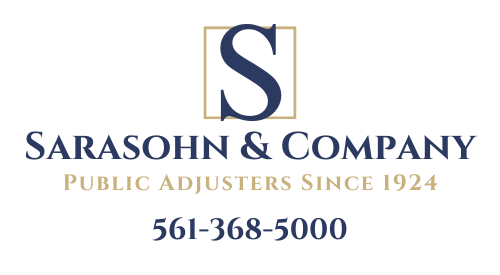Navigating the aftermath of property damage can be stressful and complex, especially when it comes…

How Are Public Insurance Adjusters Paid?
Understanding the compensation structure of public insurance adjusters is crucial for anyone dealing with property damage claims. These professionals play a pivotal role in ensuring that policyholders receive the full benefits of their insurance policies. But how exactly are they compensated for their services? This article delves into the various payment methods and factors influencing the fees of public insurance adjusters.
What are Public Insurance Adjusters?
A public insurance adjuster is a licensed professional who assists policyholders in filing and negotiating insurance claims. Unlike company adjusters, who work for the insurance company, public adjusters work exclusively for the policyholder, ensuring that they get a fair settlement.
Commission-Based Fees
One of the most common ways public insurance adjusters are paid is through commission-based fees. This means they receive a percentage of the insurance settlement amount. The rate can vary, but it typically ranges between 5% and 20%, depending on the complexity of the claim and the adjuster’s experience.
Advantages of Commission-Based Fees
- Incentive for Higher Settlements: Public adjusters are motivated to negotiate for the highest possible payout since their payment depends on the settlement amount.
- No Upfront Costs: Policyholders do not have to pay anything out of pocket initially, making it easier to afford professional help.
Disadvantages of Commission-Based Fees
- Higher Overall Cost: In some cases, the total amount paid to the adjuster can be substantial, especially for large claims.
- Potential for Conflict of Interest: Some argue that the commission structure might incentivize adjusters to prolong the claims process to increase the settlement amount.
Hourly Rates
In some cases, public insurance adjusters might charge an hourly rate. This method is less common but preferable for smaller or less complex claims where a commission might seem too high relative to the claim amount.
Advantages of Hourly Rates
- Cost Transparency: Policyholders can see precisely how much they pay for each adjuster’s work hour.
- Potentially Lower Costs: Paying by the hour can be more economical than a commission for more minor claims.
Disadvantages of Hourly Rates
- Upfront Payment: Unlike commission-based fees, policyholders might need to pay the adjuster as they work, which could be burdensome for some.
- Uncertain Total Cost: The final cost can be unpredictable if the claims process takes longer than expected.
Flat Fees
Some public insurance adjusters charge a flat fee for their services. This fee is agreed upon before the adjuster begins working on the claim and does not change regardless of the settlement amount.
Advantages of Flat Fees
- Cost Predictability: Policyholders know precisely how much they will be paying, which can help with budgeting.
- No Incentive for Prolonging the Claim: Since the fee is fixed, the adjuster is not inclined to extend the claims process unnecessarily.
Disadvantages of Flat Fees
- Higher Initial Payment: Policyholders might need to pay a substantial amount upfront or in installments, which could be challenging for some.
- Less Motivation for High Settlements: Unlike commission-based fees, flat fees do not incentivize adjusters to push for the highest possible settlement.
Hybrid Payment Structures
Some public insurance adjusters might use a hybrid payment structure, combining elements of commission-based fees, hourly rates, and flat fees. For example, an adjuster might charge a lower commission rate combined with an hourly fee or a flat fee with a performance bonus based on the settlement amount.
Advantages of Hybrid Structures
- Flexibility: These structures can be tailored to suit the needs of both the adjuster and the policyholder, offering the best of both worlds.
- Balanced Incentives: A hybrid structure can balance the need for fair compensation with the motivation to achieve a high settlement.
Disadvantages of Hybrid Structures
- Complexity: These payment structures can be complicated to negotiate and understand, potentially leading to confusion or disputes.
- Variable Costs: The total cost can still be unpredictable, depending on the agreed-upon terms.
Factors Influencing Adjuster Fees
Several factors can influence how much a public insurance adjuster charges for their services:
- Claim Complexity: More complex claims typically require more time and expertise, leading to higher fees.
- Adjuster Experience: More experienced adjusters often charge higher fees due to their expertise and track record of successful claims.
- Geographic Location: The cost of living and average fee structures in a given area can impact how much adjusters charge.
- Claim Size: Larger claims might attract higher fees, mainly if a commission-based structure is used.
Choosing the Right Payment Structure
When deciding on a payment structure for a public insurance adjuster, policyholders should consider the following:
- The size and complexity of their claim.
- Their financial situation and ability to pay upfront fees.
- Their preference for cost predictability versus potential savings.
It is also advisable to get quotes from multiple adjusters and carefully review their terms and conditions before deciding.
Conclusion
Understanding how public insurance adjusters are paid is essential for anyone navigating the insurance claims process. By choosing the proper payment structure and an experienced adjuster, policyholders can maximize their chances of receiving a fair settlement without incurring unnecessary costs.




